
How your life coach can help you with:
Something you are having difficulty making progress with
A challenge you are not sure/confident about
A plan of action
Brainstorming for a solution
A new strategy or some guidance
What is next:
The next goal or project to take on
What you want next for yourself
Challenges that are more stretching
New opportunities you would like to pursue
Source:
http://www.lifecoachingedinburgh.co.uk/coachingsessions.htm 116
2 / Models for Coaching
There are more models for coaching than just the “Grow” model.
By this statement, I do not want to diminish the merits of
“Grow”. “Grow” is perfect as a starting model. In fact, for many coaches it will always remain their favourite approach to coaching. You too may find yourself returning to it often because of its versatility, clear structure and thoroughness. In addition, “Grow” is a model, which allows for self-coaching as it does not necessarily require the presence of a coach.
However, with times many scores of models have been developed. Some of them certainly also have their merits.
Knowing about them allows you to vary your approach and add more possibilities to your coaching style, which will better your chances of success. In fact, a many models approach is probably your best bet to lead people towards finding the best solution possible.
A warning is in place though: A model is a framework,. Just like a map is not the road, the model is not the coaching. Some people develop a model and then commercialize it, asking money from whoever works with their model. Personally I would advise against spending money just for using a model.
Although, by the time you finished studying the present chapter, you will understand the importance of a good model., you will also understand that there is no such thing as a miracle-model.
In the end, the best coach is not the one with most techniques in his sleeve. In fact, using too many techniques may even reflect negatively on the coaching process. Bruce Lee once said: "I would rather have ten techniques that work for me than one hundred that work against me."
117
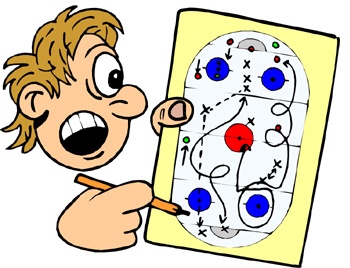
I could not agree more. Therefore, my advice is to keep things as simple as possible. However, when “simple” does not work, Knowing of other models will allow you to tap into new resources of creativity.
118
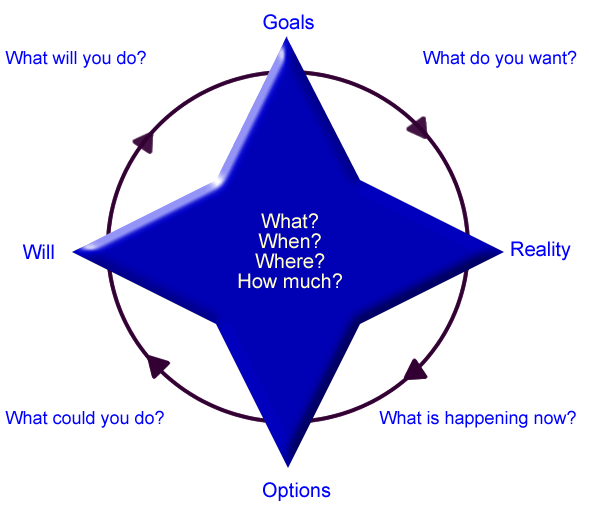
2.1 THE GROW COACHING MODEL
“Grow” may well be the single most important word in this manual. The grow-model is the most widely used model for coaching. The mnemonic is easily remembered and reminds us of what coaching is all about. It helps us to remember a simple but powerful model which is easily understood, well structured, straightforward to apply and suitable for general application.
GROW =
Goal, Reality, Options, Wrap up
119
The GROW coaching model centers around three basic questions and the logically ensuing action:
What does the coachee want?
What does he have now?
What can he do / get?
Take action
Analysis of Elements:
Goal:
- Define long term goal (= central theme of the coaching project), sub goals, medium term goals and goals per session
-
Goals must be SMART: specific, measurable, acceptable, realistic (relevant), time phased.
-
State your goals in the positive: state what you want
to achieve, rather than what you don’t want.
-
Is your goal consistent with any other goals you have?
-
The best goals are the ones that inspire and pull you: you don’t have to go searching for them, but feel “you just have to do them”. They are objectives you WANT to achieve, rather than things you feel you “should do”.
-
Some people like cherishing a dream-goal, knowing that deep inside they are not willing to pay the price it takes to make that dream come true. Are you really prepared to commit yourself, go for it and pay the price?
-
What is really inspiring you: the goal itself or the road leading towards it? Maybe it’s not the teddy-bear you’re after, but you love to shoot? That’s o.k., but it is important to know it.
-
“For each new world, we have to give up an old one”: when change happens, something is always lost. What are the risks involved in pursuing your goal? And what is the risk of not 120
doing so? What will you lose if you get to your goal? And what if you don’t?
Reality:
-
Which changes or experiences lead to the need for coaching?
-
What has already been done to cope with the situation?
-
To what effect? What was good? What was less good?
-
What are the risks inherent in pursuing and achieving your goal: what will you lose if you don’t accomplish your goal –
what if you do?
-
What is your current situation? What are the resources that you can use to reach your goal? Experience, skills, achievements, contacts, money, time, equipment, steps already completed
-
Swot analysis: what are your personal strengths and weaknesses? Which points need working on? How and when will you do so?
-
What are the obstacles that have been blocking or slowing down progress? Are other people obstructing you? Do you have to change things in your personal environment? Do you have to acquire new resources: contacts, equipment, skills, knowledge? Are there any justifications stopping you from achieving your goal: do you feel you are too old, not capable, why?
Options:
- Generation and structuring of creative ideas (brainstorming)
-
How can you realize your goals?
Advantages and
disadvantages?
-
How will you deal with each of the definedobstacles?
-
How can you acquire the resources that you need?
121
-
What are you already doing now that works in
terms
of getting your goal?
-
What would really motivate you?
-
What would a change of attitude, reaction, belief… bring you?
-
What is the simplest solution to any given obstacle?
-
What would be the first step to get around the obstacle?
-
What would be the perfect solution?
-
What would you do if you had no limitations?
-
How can you take action on your biggest challenge?
-
What would be a bold / adventurous / creative action for you?
-
What would be a risk that you would be willing / unwilling to take?
-
Do you really have to solve the obstacle? Maybe there is a way around to avoid the negative consequences? Maybe there is a partial or temporary solution that would work for the moment?
Wrap Up
- Reality Check: which options are valid?
-
How to convert my options in real actions? What is required to implement the conclusions?
-
Where do you go from here? Where do you start? Do you know other necessary steps? How do you work forward from the first stepping stone to the next?
-
How and when will you get the support and resources you need?
-
Create a detailed action plan with SMART stepping stones leading to your goal (specific, measurable, acceptable, relevant and realistic, time phased steps)
-
Ask yourself if you considered all the necessary and useful options.
122
-
For each stepping stone, ask some or all of the following questions:
o Is the stepping-stone in its right place? Are there more urgent actions, which need to be attended to first?
o Do I have the necessary resources to make the step?
Maybe you have to acquire a new skill first? To gain specific knowledge? To reschedule other activities?
o Do I need to take action to change an existing pattern?
o How will I remind myself of my goal and process, of my present location and direction and the reasons why I am doing this?
o Do I have to monitor something, complete something, ask for something, offer something, contact somebody…
o Who will be most affected by my actions? Do I need to inform them? When? How? – and how will I cope with any adverse reactions from them or others?
-
By what date do you want to have reached each planned stepping stone?
-
Are you convinced that the planned action steps will enable you to achieve your overall goal? Maybe you might have to adjust some tasks or time-scales to have more certainty?
What else do you need to become totally confident that you will reach your goal?
-
How will you know that you have reached your goal?
-
How will you celebrate your successes?
123
Visualization:
It is important always to know why you are doing the things that you are doing.
If you shoot with a rifle without seeing your goal and aiming at it, there is little chance for the bullet to hit the bull’s eye.
Yogi Berra says: If you do not know where you are going, you might end up somewhere else. I would add to that: And if you do not know why you are going there, you might lose interest along the way and, to paraphrase Cervantes, “take the street of by and by, which leads to the house of never”.
Often, the goal we have in mind is not our final goal: The promotion we seek stands for recognition, economic and social progress or self-realization.
One way of visualizing our goal is to put up a picture of what achieving our goal really means to us: the possibility to acquire the house or car of our dreams, to build a happy family or to conquer a seat at the board of directors.
Another way is to see ourselves in the future situation that we are striving for and already start making this image come true by frequenting the right people, dressing accordingly and adapting our speech.
An excellent way, which also helps us to keep track of where we are at any given time, are personal vision and mission statements: compact descriptions of what we want to achieve and why and how we will do so.
124
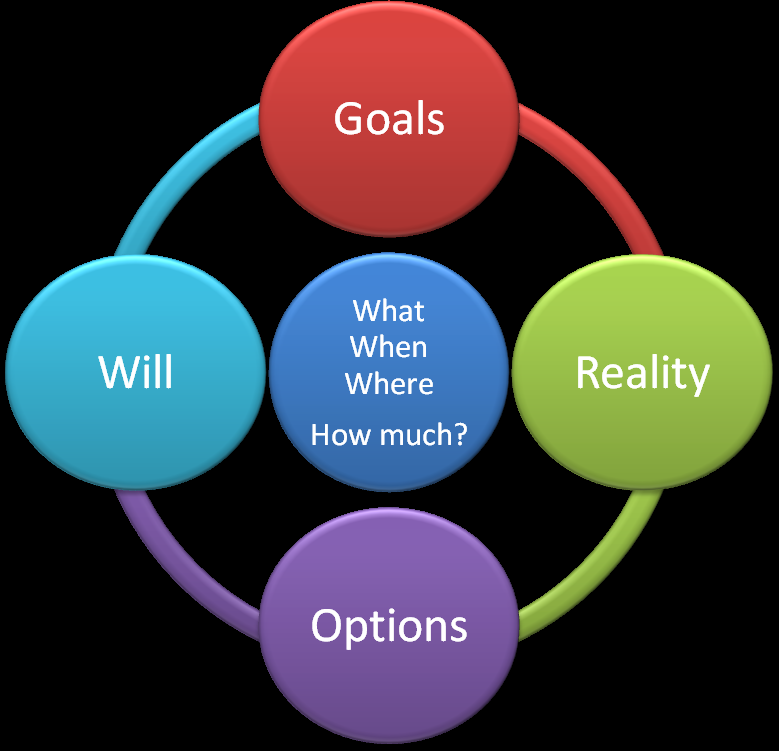
The Grow-model provides a perfect basis for creating these statements and ground them solidly on the fundaments of the reflective process that lead to our action plan: 1. Develop a specific goal statement:
What do you really want? Include smart medium term and long term goals.
2. Develop a specific reality statement:
Describe your present reality, your resources and the obstacles that prevent you from advancing towards your goal.
3. Create a detailed action plan
Describe the smart stepping-stones that lead to your final goal.
125
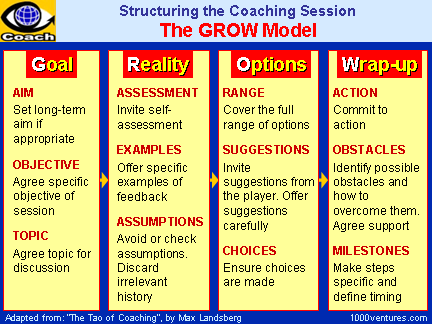
List the smart actions that will take you from one stepping-stone to the next.
Make several copies of your statements and put them where you have easy access to them. Go through them at least once a week.
Make adjustments if necessary.
126
2.2 THE GO-PASS COACHING MODEL
GO is for Goal
If you don’t have a goal, chances are you may never move forward from where you are now – Or you might end up anywhere, base don decisions others will take for you.
It is important to set up a goal that inspires you. If you feel there is nothing really inspiring you, make up a goal. Anything is better than drifting through life like stray wood on the ocean.
Think, read, dream, communicate and create a goal. Maybe you won’t come up with the ideal goal, but that is not important. Just pick something exciting and/or challenging and set up a “smart” goal.
“SMART” stands for: Specific, Measurable, Achievable, Relevant and Time phased
P is for Plan
How will you realize your goal? What strategy will you use?
Which stepping-stones are to be considered?
Possible required actions are:
-
increasing your knowledge, information, skills,
-
Changing attitudes, patterns, dressing differently,
-
Extending your circle of useful contacts: switching network, department, employer, job,
-
Invoking help from others
-
Saving some money, buying material
127
Put your plan on paper. Make sure all stepping-stones and planned actions to reach it are “smart”.
A is for Action
Plans require action in order to become reality. Concentrate on the first stepping-stone. When you have reached it: evaluate, celebrate and move on to the next.
If you have not reached the stepping-stone within the time set: adjust your plan, reconsider the actions planned and move further from where you are now.
S is for Structure
Changes planned rarely occur without a supportive framework that carries them. Once you have your plan, therefore: share it, surround yourself with people that support you, pin visual encouraging displays on the wall, set constant diary reminders, talk a friend in to sharing your goal with you, ask someone to check in on you once a week to ask how you’re doing.
S is for Success
See yourself in the future: how life will be changed once you have reached your goal. Watch the future-you, step into this future vision, see the scene around you, feel the feelings, enjoy the success, hear yourself state your goal and the reasons why you want to achieve it.
Revise the scene when necessary. Make it positive, appropriate, realistic and appealing. When and where possible: already start being the person you will become.
One of the most important things in life is: How you see yourself.
Mostly, people become who they think they are!
128
2.3 RADAR-COACHING
1. R is for Rapport
Creating rapport is about establishing a tangible and harmonious link by getting on the same wavelength with the coachee.
You know there is rapport when everything clicks and feels right, when it is as if you know and understand each other and your ideas are synchronized. When there is rapport, you feel bonded, connected and enjoy time together.
Link yourself with people and things coaches know about and like. Make coaches talk about subjects that are familiar and enjoyable to them. Search for common ground. If they like gardening and you do too, then tell and show hem how much you
enjoy
gardening.
You can develop rapport faster by paying attention to body language, mirroring and matching and empathic listening.
Body language
- Reading body language correctly enables you to identify the coachee’s emotions and discomfort.
- Using body language appropriately, including eye-contact and touch, helps you to get the attention desired and can create a positive perception in the coachee.
Mirroring and matching
- The idea is to align your movements and body image with the 129
coachee’s demeanour. Mirroring or reflecting is not the same as imitating, but by presenting similar demeanours as coachee’s, they will subconsciously feel that you have much more in common with them than may actually be the case.
- You can mirror or match language, including rate of speech and vocabulary used, breathing, voice, moods, movements, energy level, …
Empathic listening
Empathic listening basically is acknowledging the coachee’s feelings and reflecting them. The subject is treated more in detail in an other part of this book.
Breaking the mirror
There are two sides to every coin. If you feel the need to create distance or to break the synchronization because you want coachee to get out of their comfort zone, or in order to show disagreement: stop mirroring and behave differently from the coachee.
2. AD is for Ask about Difficulties
What you want to achieve is turning perfectionists with problems and difficulties into explorers with challenges and possibilities.
It is necessary therefore to collect sufficient information.
You want to know about what the coachee really wants, their needs, concerns, anxieties and difficulties, their views of the needs and concerns of other relevant people affecting the situation.
130
Often, people build their thinking on hidden premises (I cannot, they will not, …) and just as often fear is at the basis of these premises.
They start out with questions like:
- Do I measure up? (Do you?)
- Is this good enough? (Usually not)
- Am I doing this right or wrong? (Failure!)
- Won’t I make mistakes? (mistakes are unacceptable!) What happens is they live a life filled with blame, guilt, judgement, see life as a fight between winners and losers and end up creating low self-esteem.
However, life is not about winning and losing, it is about learning! A failure in outcome does not mean somebody is a failure as a person, it just means they just learned something!
The leading questions should be:
- What are my possibilities here?
- How else can I look at this?
- What will make the difference so …?
- What else can I try?
- What am I free to do now this project has been cancelled?
With acceptance and exploration of reality, room for experiment, enthusiasm and play are created and self-esteem is boosted.
3. A is for Affirm Understanding
Coachees benefit from feeling taken seriously. That is: respected and accepted for who they are. They also need to feel understood and have their problems acknowledged.
131
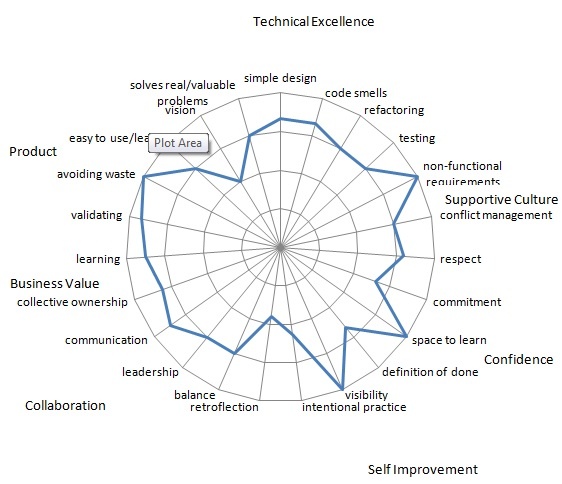
As a coach, you focus on the issues, needs and emotions of the coachee. Through active and empathic listening, including asking questions and reflecting their feelings and the content of their problem, you get a “yes, that is what I feel”, or “yes, that is what I want” from them as a necessary basis for planning action.
4. R is for Result
Focus on setting goals: inspire coachee to work out concrete action steps and strategies for action, brainstorm and be open to all ideas.
Implement structured accountability and evaluation.
132
2.4 PETER HAWKIN’S CLEAR MODEL
Peter Hawkins sees five phases in a coaching process: 1. Contracting
- Open the discussion
- Set the scope
- Establish desired outcomes
- Agree the ground rules
Examples of opening line:
- How would you like me to coach you today?
- What are we going to do today?
2. Listening
Use active listening and catalytic interventions to help coachee develop understanding of the situation and generate personal insight.
A catalytic intervention seeks to elicit self-discovery, selfdirected learning, and problem solving
For example – ‘Tell me about a previous time when you had to work with a colleague who you found particularly challenging … How did you deal with that?
3. Exploring
Help coachee understand the personal impact the situation is having on him and challenge him to think through possibilities for future action in resolving the situation.
133
4. Action
Support the coachee in choosing a way ahead and deciding the next step(s).
5. Review
- Close the intervention: reinforce the ground covered, discussions made and value added.
- Encourage feedback from the coachee on what was helpful about the coaching process, what was difficult and what they would like to be different in future coaching sessions.
The CLEAR model has a number of differences from the other models. It starts by discussing the ‘contract’. This allows the ground rules to be set, so the coachee has the opportunity to discuss how he or she would like to be coached. There is then a big emphasis on listening – a key component of coaching. When we are being listened to we feel valued, when we feel valued our self-confidence rises and we are more likely to commit to change. The review stage is also important, as it not only reviews the outcome of the coaching session but also reviews the effectiveness of the process. This is important. We should not just assume that the session has been effective, particularly if there is going to be a further session. We should discuss how useful the session was, and how we could make it even more useful next time.
134
2.5 BECK’S COGNITIVE BEHAVIORAL
MODEL
Beck (1976) developed a psychotherapy that emphasizes the role of thinking in how we feel and what we do.
The cognitive-behavioural model is based on the idea that our thoughts cause our feelings and behaviours, not external things, like people, situations, and events. The benefit of this fact is that we can change the way we think to feel / act better, even if the situation does not change.
Many cognitive distortions are also logical fallacies.
All-or-nothing thinking (splitting) – Conception in absolute terms, like "always", "every", "never", and "there is no alternative". (See also "false dilemma" or "false dichotomy".
Overgeneralization – Extrapolating limited experiences and evidence to broad generalizations. (See also faulty generalization and misleading vividness.)
Magical thinking - Expectation of certain outcomes based on performance of unrelated acts or utterances. (See also wishful thinking.)
Mental filter – Inability to view positive or negative features of an experience, for example, noticing only tiny imperfection in a piece of otherwise useful clothing.
Disqualifying the positive – Discounting positive experiences for arbitrary, ad hoc reasons.
Jumping to conclusions – Reaching conclusions (usually negative) from little (if any) evidence.
135
Two specific subtypes are also identified:
o Mind reading – Sense of access to special knowledge of the intentions or thoughts of others.
o Fortune telling – Inflexible expectations for how things will turn out before they happen.
Magnification and minimization – Magnifying or minimizing a memory or situation such that they no longer correspond to objective reality. ("make a mountain out of a molehill.")
In depressed people, often the positive
characteristics of other people are exaggerated and negative characteristics are understated.
o Catastrophizing is a subtype of magnification: it is the inability to foresee anything other than the worst possible outcome, however unlikely, or experiencing a situation as unbearable or impossible when it is just uncomfortable.
Emotional reasoning – Experiencing reality as a reflection of emotions, e.g. "I feel it, therefore it must be true."
Should statements – Patterns of thought which imply the way things "should" or "ought" to be rather than the actual situation the person is faced with, or having rigid rules which the person believes will "always apply" no matter what the circumstances are. Albert Ellis termed this
"Musturbation".
Labelling and mislabelling – Limited thinking about behaviours or events due to reliance on names; related to overgeneralization. Rather than describing the specific behaviour, the person assigns a label to someone or himself that implies absolute and unalterable terms. Mislabelling involves describi









